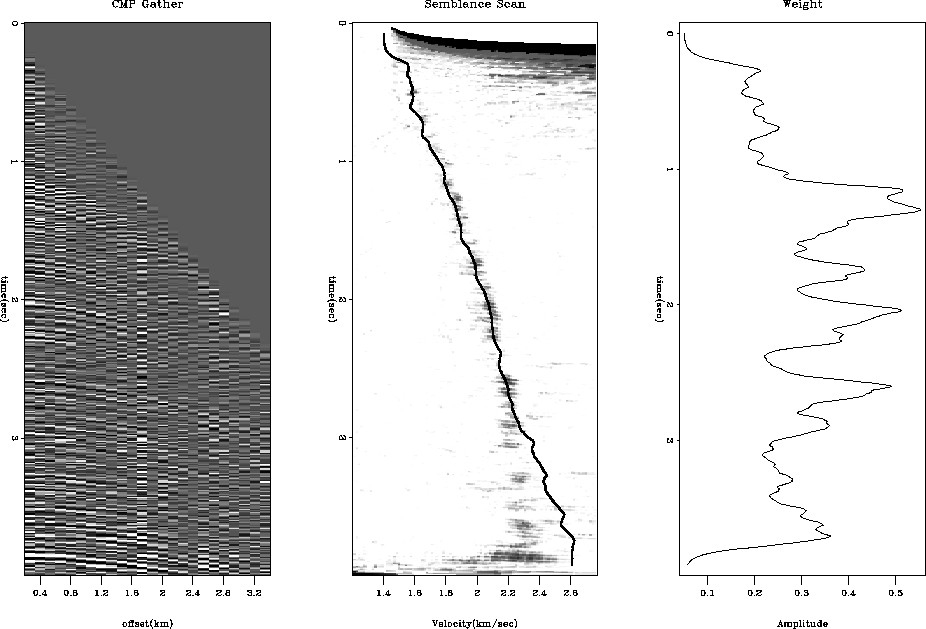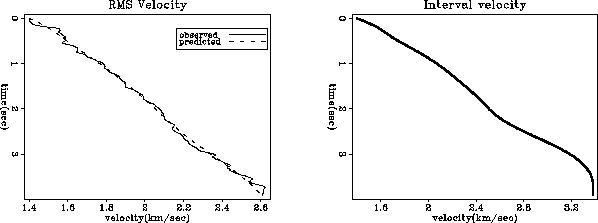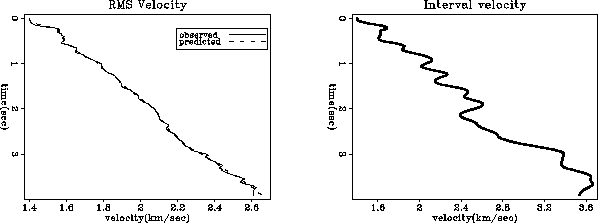




Next: Lateral variations
Up: NULL SPACE AND INTERVAL
Previous: NULL SPACE AND INTERVAL
Choosing the size of  chooses
the stiffness of the curve that connects regions of good data.
Our first test cases gave solutions
that we interpreted to be
too stiff at early times and too flexible at later times.
This leads to two possible ways to deal with the problem.
One way modifies the model shaping
and the other modifies the data fitting.
The program below weakens the data fitting weight with time.
This has the same effect as stiffening the model shaping with time.
clapp
chooses
the stiffness of the curve that connects regions of good data.
Our first test cases gave solutions
that we interpreted to be
too stiff at early times and too flexible at later times.
This leads to two possible ways to deal with the problem.
One way modifies the model shaping
and the other modifies the data fitting.
The program below weakens the data fitting weight with time.
This has the same effect as stiffening the model shaping with time.
clapp
Figure 1
Raw CMP gather (left),
Semblance scan (middle),
and semblance value used for weighting function (right).
(Clapp)
![[*]](http://sepwww.stanford.edu/latex2html/movie.gif)





stiff
Figure 2
Observed RMS velocity
and that predicted by a stiff model with
 . (Clapp)
. (Clapp)





flex
Figure 3
Observed RMS velocity
and that predicted by a flexible model with
 (Clapp)
(Clapp)





vrms2intConverting RMS to interval velocity





Next: Lateral variations
Up: NULL SPACE AND INTERVAL
Previous: NULL SPACE AND INTERVAL
Stanford Exploration Project
4/27/2004



